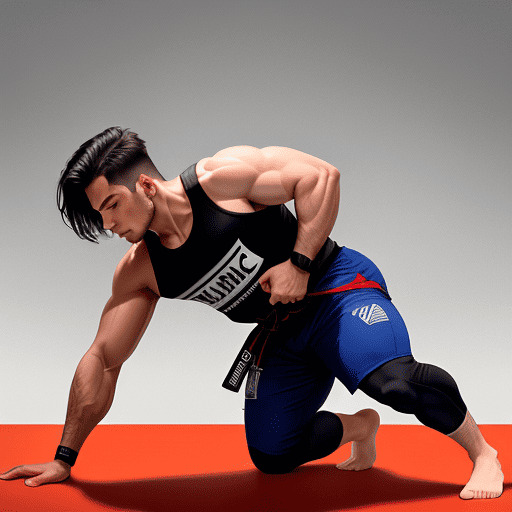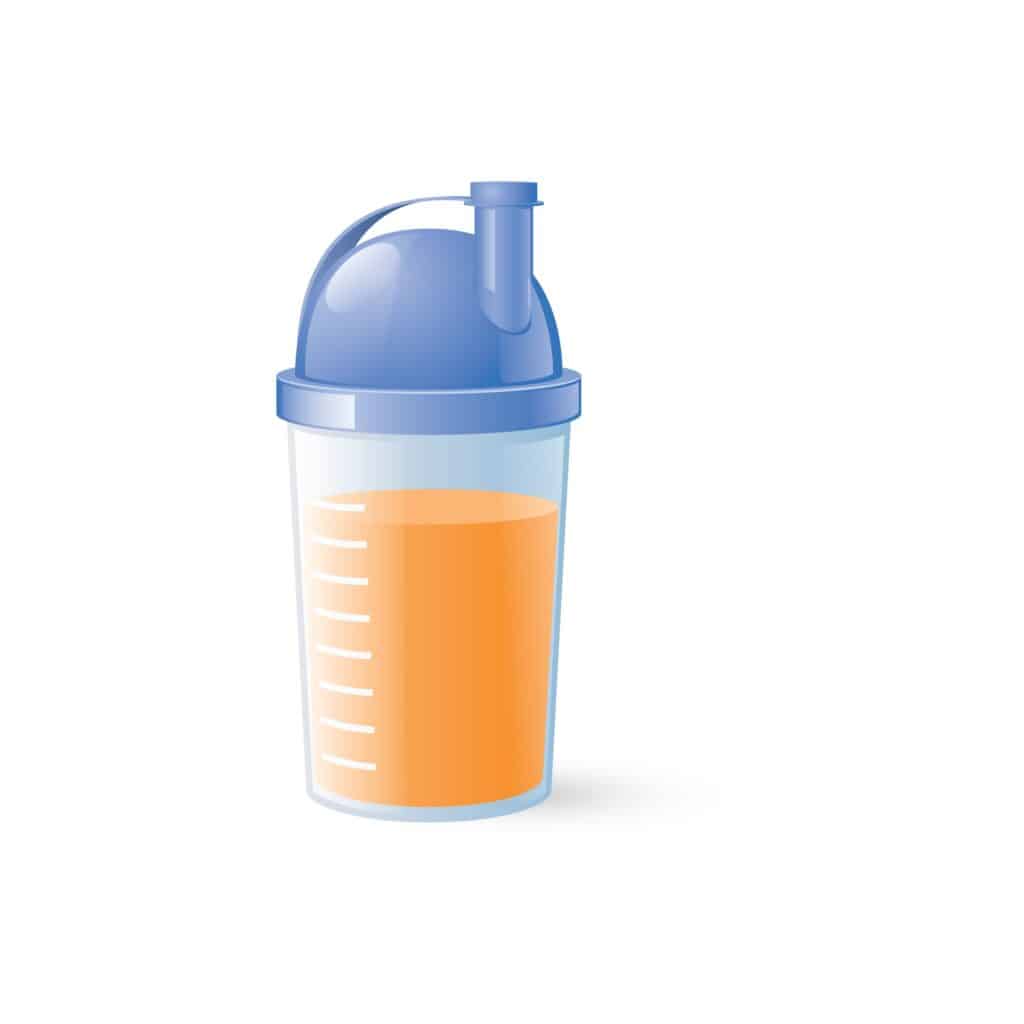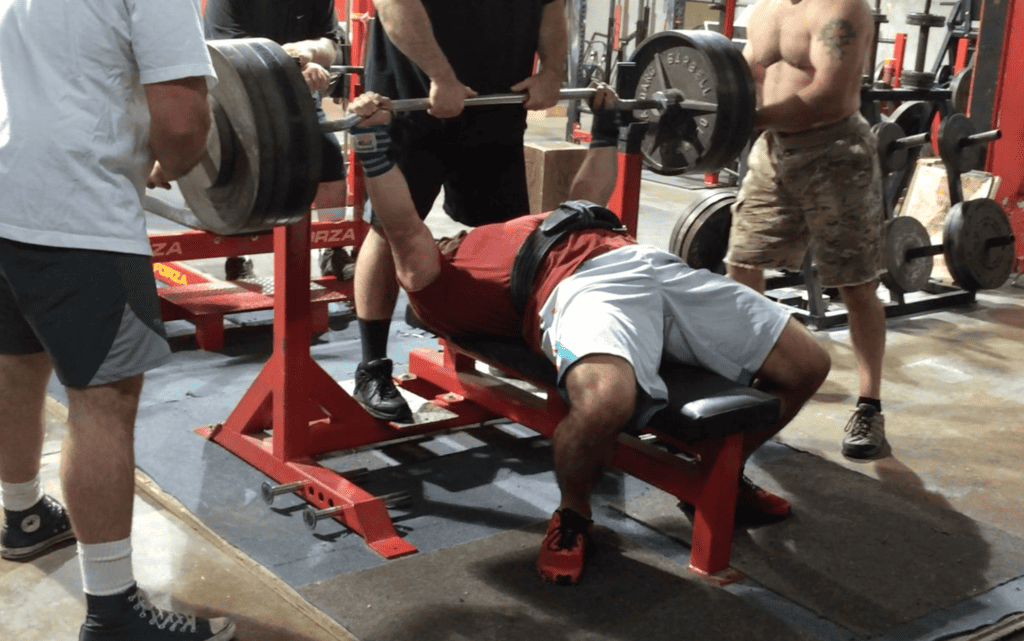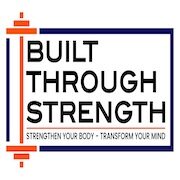Weight Training for Jiu Jitsu: 9 Essential Elements To Significantly Elevate Your Game!

As I’m sitting here watching a combat jiu jitsu match, I’m thinking about some of the most important factors to me when utilizing weight training for jiu jitsu / any combat sport.
While this isn’t an exhaustive list, these are some main factors I take into account.
One word you will see frequently, is “optimal”.
With that being said, here are some of the main factors I believe are important for jiu jitsu / combat athletes overall.
🟧 Energy System Work:
Jiu Jitsu matches ebb and flow. One second you’re fighting for a takedown, the next second you’re on your back immediately looking for a sweep. That takes energy! – You’ve heard the term, “cardio as a weapon”. We need to ensure we know what the energy systems are and how to effectively work each energy system to achieve the best conditioning possible on the mat. Long Distance running is great for the Oxidative Phosphorylative System, not so much for the ATP-PCR or Glycolytic Systems. This is important to be aware of.
🟧 Exercise Selection:
We need to train smart, especially when we are weight training for jiu jitsu or any other sport. I talk about “Risk to Benefit Ratio” frequently. I’m not trying to build “powerlifters”, therefore it needs to be understood that we are in the gym with a focus on improving an athlete for their specific sport. With that being said, I feel it is critical to aim for the best “bang for your buck” with the least risk to keep an athlete safe and continuing to become progressively stronger. Injuries are a part of the game, whether it’s in the gym or on the mats, but we try to minimize that risk best we can.
🟧 Technique, Technique, Technique:
Anyone who I train will fully understand this. We know how important technique is in jiu jitsu, and it’s just as important, if not more so in the gym. Bad technique = higher risk of injury, bad patterns (thus again, leading to increased chance of injury and less efficient work), leaked energy, etc. Think about how being efficient in a roll allows you to save energy, find your spots to think/rest, etc. Being efficient in the gym leads to more strength and power output, along with reduced risk of injury. I see people squatting and deadlifting inefficiently all the time. Not only does this increase risk of injury and rob us of potential power, it can also lead to overall “wear & tear”, thus potentially shortening a career.

🟦 Intensity & Volume:
The balance here is important for me. Too much or too little can set you back, and it’s very important to understand how much you’re doing outside of the gym, on the mats, etc. We need to take all of that into account. I try to find that spot where the athlete is going to benefit, get stronger, but also be able to optimally recover. Heavy lifting puts significant (and extra) demand on the Central Nervous System, and we need to be as optimal as we can. Another reason is to avoid injury. For a person who is training for as much strength as possible, I may have them go up after a tough rep if the circumstances are right. Most of the time, I’m not going to do that with an athlete unless I’m very confident they are not at risk.
🟦 Active Recovery:
Downtime is great, but I’m a big fan of “active recovery” as opposed to sitting around. Going for some walks, doing some high rep band work, some light sled dragging, etc. This will increase circulation / blood flow bringing nutrients and oxygen to the muscles. This can potentially lead to faster recovery times. You’re essentially promoting an optimal environment to repair tissue, reduce inflammation and restore energy levels more so than you would with passive recovery.
🟦 Functional Mobility:
Movement is crucial. Enhancing your range while maintaining strength is important. Efficient movement can be the difference between passing guard, maintaining a position, getting to a more advantageous position or getting out of a less advantageous one. Whether it’s a part of your warm-ups, during or after your workout or you have a dedicated mobility day, “active recovery” movements are important t in terms of overall movement and reduced injury risk.
🟩 Building Mental Toughness:
Based on the type of workouts you’re doing, hard conditioning can bring you to a place you normally reserve for hard / long rolls, or tournaments. I know when we started training for Masters’ Worlds this year, the guys’ were not looking forward to coming to the gym during those 2 months. But… their conditioning for the tournament was on point! After that tournament, we had some conversations about how they felt. Whether it was John Welch, taking double gold at 63 or Don Staben taking silver in super heavyweights and bronze in absolutes, the conditioning and the strength were there to help them when they needed that edge. That next level where you hope your opponent can’t go. Overall, The mind commands the body. Working hard in the gym will give a mental edge that you will recognize, and can also help to keep you calm and collected in the heat of a match.
🟩 Optimal Nutrition:

I think this one is kind of self explanatory, but many people still don’t understand how important it is to get the macronutrients and micronutrients they need for ample recovery. Another piece of this is overall performance. Carbs are the main energy source, especially during a high-intensity workout. You need to maintain glycogen stores to provide the fuel the body needs and to prevent fatigue. You need protein for muscle repair and growth. You need to repair the muscle tissue broken down during training. Fats are important to support hormone production and help absorb the fat soluble vitamins that we take in. Fats are also important in terms of overall energy balance and metabolic function. There are a million different “diets” out there, but we need to pay attention to the needs our sport demands. If you’re getting injured all the time, always feeling tired / fatigued, have a ton of aches and pains, etc, ask yourself if your food choices / overall macro intake could be improved. Obviously, this is jiu jitsu…there’s gonna be injuries, there’s gonna be aches and pains, but the point is to minimize these risks as much as possible.

🟩 Preventing Injuries:
Staying in the game means keeping injuries at bay with focused exercises that reinforce your body’s defenses, “active recovery”, rest, etc. I am a huge believer in high rep band work for injury mitigation. The reason I love this is because it helps get blood flow into the connective tissue. A phrase I’ll use frequently in the gym, is: “Blood Flow = Recovery”. Blood Flow is much higher in the muscles than it is in connective tissue (Tendons, ligaments, etc). What does this mean? Blood flow helps recovery by delivering oxygen and nutrients, removing waste products and assisting in energy production. Connective tissue has much lower blood flow than muscle, making it more difficult for nutrients and oxygen to reach those areas, especially during and after a workout. Because of that, we do high rep band work, where we have 0 focus on the muscle. This is all for connective tissue strength / blood flow. These are the only movements where I tell people to stay “fast and loose”. The tighter we are here, the more we’re going to fatigue the muscle, which is not the intent of this movement. I’ve seen time and time again, people get injured when their strength grows too rapidly for their connective tissue. I’m a firm believer this was the reason I stayed relatively unscathed throughout my time competing in powerlifting.
I care so much about the people I train! Knowing they trust me with their bodies is a compliment, and it’s not something I take for granted. I’m always going to ensure we’re doing things (wait for it, I’m going to use the word one more time) as optimally as we can. That’s how I learned to train and that’s how I’m always going to train my our crew!

